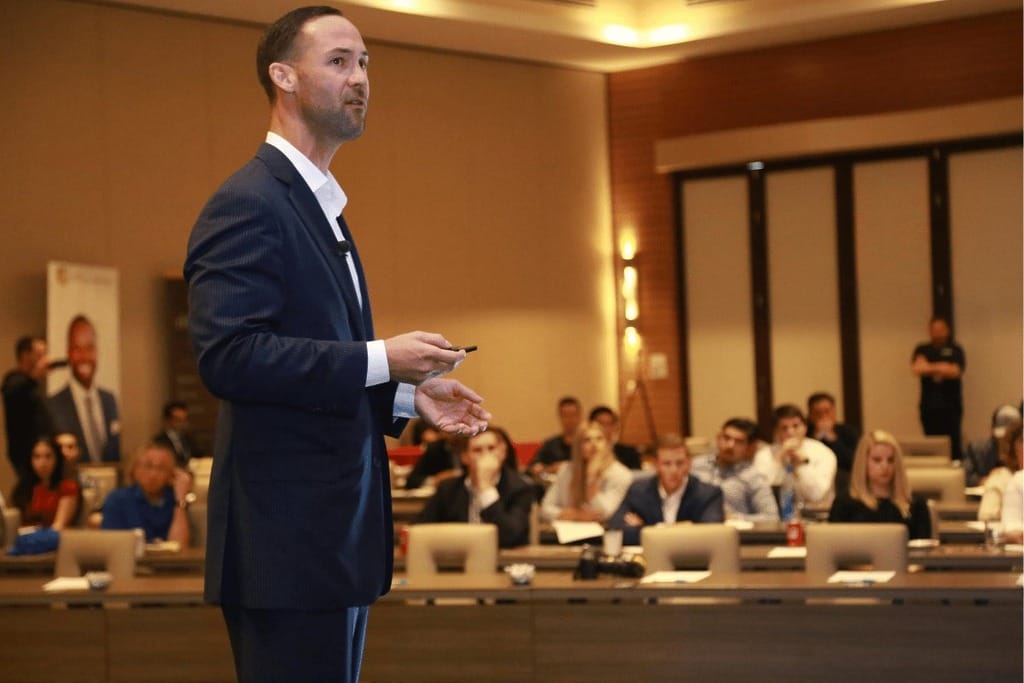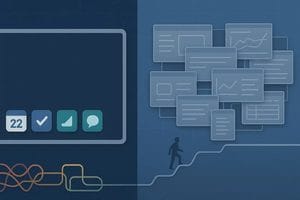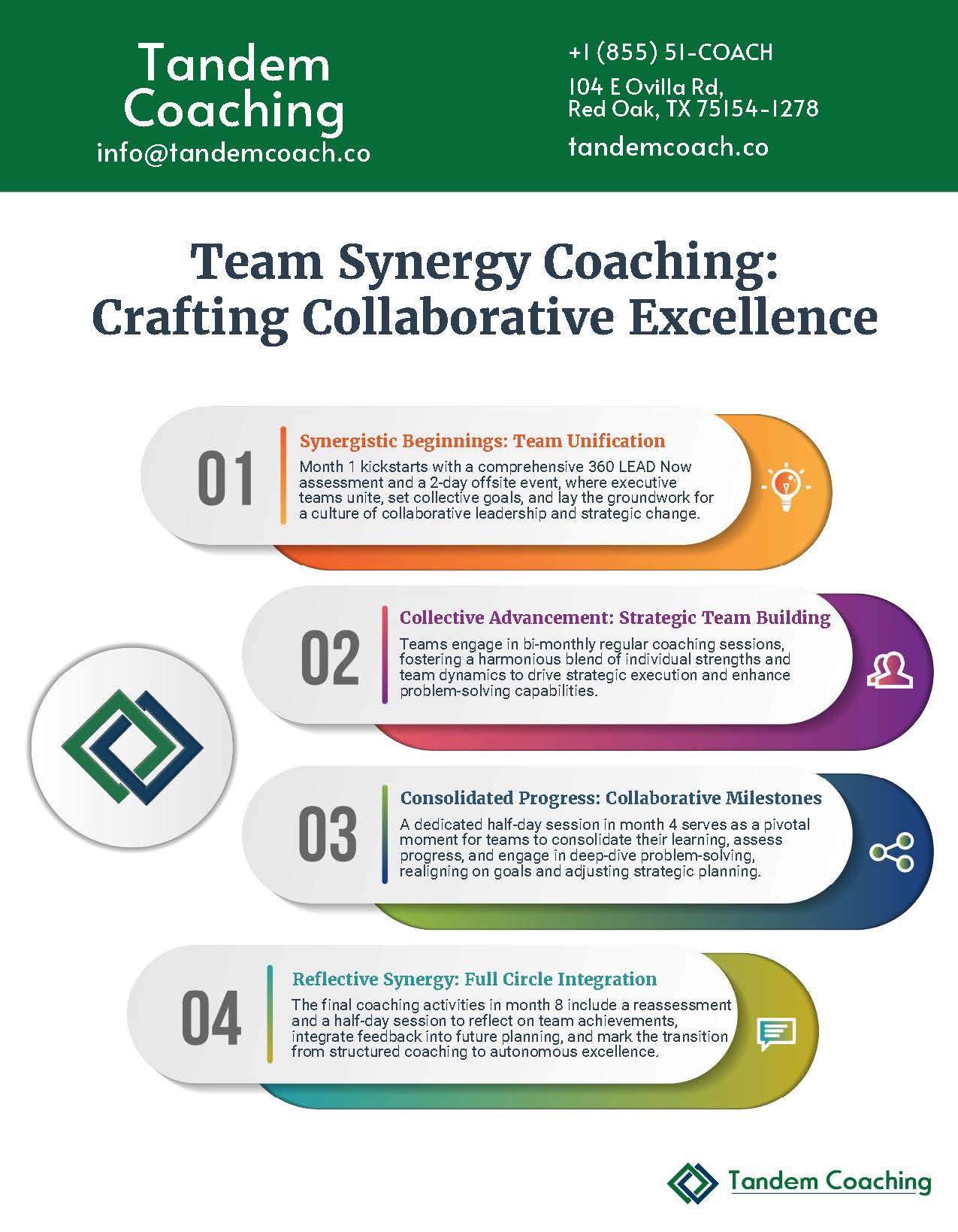Leadership isn’t just about holding a position of authority; it’s about guiding, inspiring, and empowering others to achieve collective goals.
Whether you’re a seasoned executive or an aspiring team lead, setting clear, impactful leadership development goals is crucial for personal growth and organizational success.
This comprehensive guide will explore various aspects of leadership development goals, provide practical examples, and offer strategies to help you become the leader you aspire to be.
So, let’s get started.
TL;DR – Important Leadership Development Goals
Here’s a quick overview of essential leadership development goals we’ll discuss in detail:
- Improve emotional intelligence
- Enhance communication skills
- Develop a growth mindset
- Master conflict resolution
- Boost team productivity
- Cultivate adaptability and resilience
- Strengthen decision-making abilities
- Foster innovation and creativity
- Build stronger relationships
- Improve time management and delegation
If you want to improve your leadership skills, our 9-month Leadership Development Program at Tandem Coaching is the perfect option.
Our program includes 360-degree assessments and group learning sessions to help you identify areas for growth and create a customized development plan. Get started with us today.

What Are Leadership Goals?
Leadership goals are objectives set to improve your skills, abilities, and overall effectiveness. These goals provide direction and focus, guiding you towards success both for yourself and your teams.
Leadership development goals typically aim to build competencies in areas like:
- Communication: Active listening, public speaking, presenting
- Self-awareness: Emotional intelligence, self-reflection
- Strategic Thinking: Decision-making, risk-taking, planning
- Team Building: Motivating, empowering, developing others
- Adaptability: Managing change and uncertainty
The specific goals depend on the leader’s strengths, weaknesses, and aspirations.
For example, an introverted leader might set a goal around improving public speaking skills. In contrast, someone lacking emotional intelligence may target developing stronger empathy.

What Are Smart Goals for Leadership Development?
SMART goals are a framework for creating clear, actionable objectives. When applied to leadership development, SMART goals help leaders effectively focus efforts and measure progress.
Here’s what SMART stands for in the context of leadership development:
- Specific: Clearly defined desired outcomes
- Measurable: Quantifiable targets to gauge progress
- Achievable: Challenging but feasible given constraints
- Relevant: Aligns to broader development needs
- Time-bound: With set deadlines to create urgency
For example, a SMART goal could be: “Improve my public speaking skills by presenting at two monthly meetings over the next quarter.”
SMART criteria ensure leadership goals are practical, results-focused, and propel real development.

Leadership Development Goals and Action Plan Examples
Let’s look at some concrete examples of leadership development goals along with leadership development activities to achieve them:
- Goal: Enhance emotional intelligence
- Action Plan:
- Read “Emotional Intelligence 2.0” by Travis Bradberry and Jean Greaves
- Practice mindfulness meditation for 10 minutes daily
- Seek feedback from colleagues on emotional responses in challenging situations
- Attend a workshop on emotional intelligence within the next six months.
- Goal: Improve work-life balance
- Action Plan:
- Implement Friday no-meeting policy next month
- Conduct team workload analysis in two months
- Complete team hire to alleviate pressure in three months
- Reassess progress and team sentiment in six months.
- Goal: Improve public speaking skills
- Action Plan:
- Join a local Toastmasters club and attend meetings bi-weekly
- Volunteer to present at team meetings at least once a month
- Record and review personal presentations to identify areas for improvement
- Seek opportunities to speak at industry conferences within the next year.
- Goal: Develop a more inclusive leadership style
- Action Plan:
- Complete an unconscious bias training course within three months
- Implement a diverse hiring strategy for the next round of recruitment
- Create mentorship opportunities for underrepresented groups in the organization
- Conduct quarterly diversity and inclusion surveys to measure progress.
With clear actions backing each goal, you can methodically develop the capabilities to handle all situations.

Benefits of Determining Leadership Goals
There are many advantages to thoughtfully defining your leadership development objectives, including:
- Keeping Focus: Goals prevent distraction amidst competing priorities.
- Guiding Decisions: Goals inform resource allocation and leadership development strategy.
- Tracking Progress: Tangible goals simplify measuring growth.
- Motivating Teams: Shared goals rally people behind a common purpose.
- Identifying Gaps: Analyzing goals reveals personal development needs.
- Building Culture: Leadership goals cascade across the organization.
Ready to start reaping these benefits but need help figuring out where to begin? At Tandem Coaching, we’re about making leadership growth simple and impactful. Our Leadership Development program is designed to help you set and achieve the right goals.
Why not take the first step? Reach out to us today and let’s chat about how we can supercharge your leadership journey together!

List of Leadership Development Goals
The possibilities for leadership development goals are endless. However, certain competency areas tend to be common focal points.
Here’s an expanded list of leadership development goals to consider:
- Improve active listening skills
- Develop a more empathetic leadership style
- Master the art of providing leadership feedback
- Enhance strategic thinking abilities
- Improve work-life balance to model healthy habits for the team
- Develop a personal brand as a thought leader in your industry
- Improve cross-functional collaboration within the organization
- Enhance financial literacy for better business decision-making
- Develop a leadership team development program within your organization
- Improve crisis management skills
- Enhance presentation and data visualization skills
- Develop a more inclusive and diverse team culture
- Improve negotiation skills
- Enhance problem-solving abilities
- Develop a stronger executive presence

Let’s explore some examples across a few key categories:
Executive Leadership Development Goals
Executive leadership goals focus on high-level strategic thinking and organizational impact. For C-suite leaders or senior managers, common goals include:
- Fostering innovation and digital fluency
- Clearly communicating vision and strategy
- Building external partnerships and networks
- Making decisions aligned with company values
- Leading organizational growth and transformation
According to a 2019 study by Deloitte, 81% of executives said that the ability to lead through more complexity and ambiguity will be an increasingly important skill for leaders in the future.
This underscores the importance of setting goals that enhance adaptability and strategic thinking at the executive level.
Professional Development Goals for Leadership
Professional development goals focus on enhancing specific skills crucial for effective leadership. Managers or individual contributors may target:
- Building technical and business acumen
- Attending conferences and trainings
- Obtaining coaching or mentorship
- Expanding industry knowledge
- Seeking stretch assignments
A study by the Center for Creative Leadership found that 86% of companies with mature leadership development programs were able to improve business results, compared to 52% of companies with less mature programs.
This highlights the importance of continuous professional development for leaders.

Leadership Development Goals for Managers
Managers play a crucial role in bridging upper management and frontline employees. For new people managers, key goals often involve:
- Developing team cohesion
- Giving effective feedback
- Managing team collaboration
- Tracking progress and metrics
- Improving delegation abilities
According to Gallup, managers account for at least 70% of the variance in employee engagement scores. This shows how important it is for managers to set and reach their leadership goals.

Personal Leadership Development Goals
On an individual level, some examples are:
- Building self-confidence
- Improving time management
- Developing growth mindset
- Managing stress and avoiding burnout
- Networking and building relationships
Leaders who are risk-takers, self-starters, and independent problem solvers are often rated more effective by their superiors, peers, and subordinates.
SMART Goals for Leadership Development
While those examples provide an idea of possible leadership goals, let’s put the SMART framework into practice:
- Specific: “Improve my public speaking skills by…”
- Measurable: “…presenting at two meetings per month…”
- Achievable: “…over the next quarter.”
- Relevant: Develop communication abilities.
- Time-bound: Clear three-month deadline.
Adjust the specifics based on your unique development needs as a leader.

How to Set Leadership Goals in a Workplace
Setting effective leadership goals in a workplace involves a structured approach.
Here’s a step-by-step process:
1. Assess Current Leadership Skills
Start by evaluating your current leadership abilities. This can involve:
- Self-assessment
- Performance reviews
- Leadership assessments or psychometric tests
- 360-degree feedback from colleagues, superiors, and subordinates
2. Identify Areas for Improvement
Based on your assessment, identify key areas where you need to improve.
Consider:
- Skills gaps
- Feedback from others
- Organizational needs
- Industry trends
3. Align with Organizational Objectives
Ensure your leadership goals align with your organization’s objectives.
This might involve:
- Reviewing company mission and vision statements
- Discussing with superiors about organizational priorities
- Considering departmental goals
4. Set SMART Goals
Transform your areas for improvement into SMART goals. Make sure each goal is Specific, Measurable, Achievable, Relevant, and Time-bound.

5. Create an Action Plan
Develop a detailed plan for achieving each goal.
This should include:
- Specific actions or tasks
- Resources needed
- Timeline for completion
- Potential obstacles and strategies to overcome them
6. Seek Support and Resources
Identify resources and support to help you achieve your goals.
This might include:
- Mentors or coaches
- Programs or courses
- Books or online resources
- Supportive colleagues or networking groups
7. Implement and Track Progress
Put your plan into action and regularly track your progress.
Use tools like:
- Goal-tracking apps
- Regular check-ins with superiors
- Journal entries or personal reflections
8. Review and Adjust
Periodically review your goals and progress.
Be prepared to adjust your goals or action plans based on the following:
- Progress made
- Changing circumstances
- New insights or feedback
Remember, setting leadership goals is an ongoing process. Set new goals to continue your leadership development journey as you achieve goals.

Frequently Asked Questions (FAQs)
Here are answers to some common leadership development goal questions:
What Role Does Feedback Play in Reaching Leadership Development Goals?
Continuous feedback is crucial for evaluating progress, revealing blindspots, and informing necessary goal adjustments. Seek input from all stakeholders when shaping goals and throughout the leadership journey.
How Can Leadership Development Goals Improve Team Performance?
Well-crafted goals cascade across organizations, providing direction and motivation at all levels. Shared objectives also spur collaboration as teams collaborate to support their leaders’ development.
What Strategies Can Be Used to Track Progress on Leadership Development Goals?
Use top leadership development tools, such as KPI dashboards, regular self-assessments, stakeholder surveys, 360 reviews, coaching check-ins, and daily work observation. This combination keeps leaders accountable and highlights tangible improvements.
Conclusion
Leadership isn’t a destination – it’s an ongoing journey of growth and self-discovery. The goals you set today are stepping stones to the leader you’ll become tomorrow.
Remember, great leaders aren’t born; they’re made through dedication, practice, and a commitment to continuous improvement. But you don’t have to go through this journey alone.
At Tandem Coaching, we specialize in transforming good leaders into great ones. Our nine-month Leadership Development Program is designed for high-potential leaders who are ready to advance their skills.
You’ll start with a 360 leadership assessment to understand your current strengths and areas for growth. Then, you’ll join a cohort of like-minded leaders in mastermind sessions, sharing experiences and learning from each other.
Take the lead in your career – contact us about our Leadership Development Program today!


















